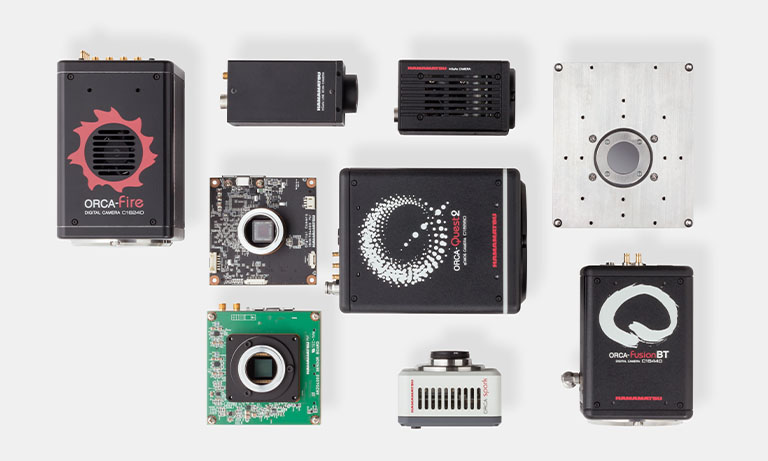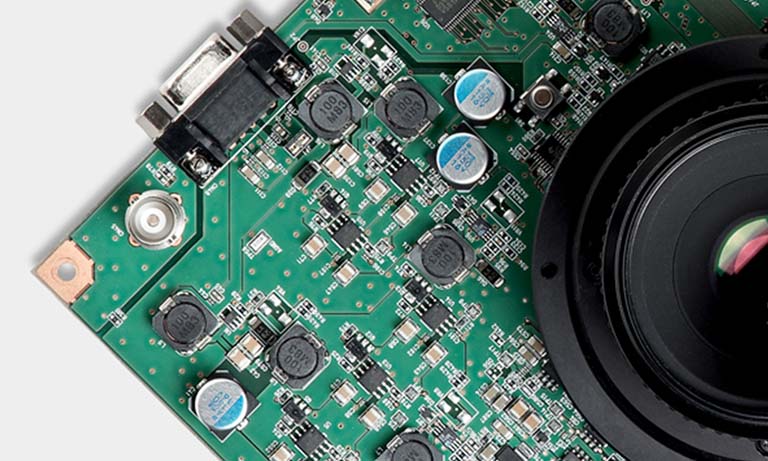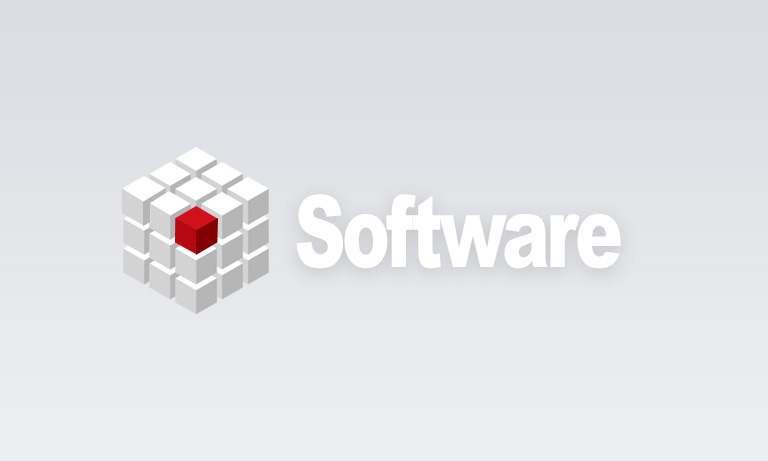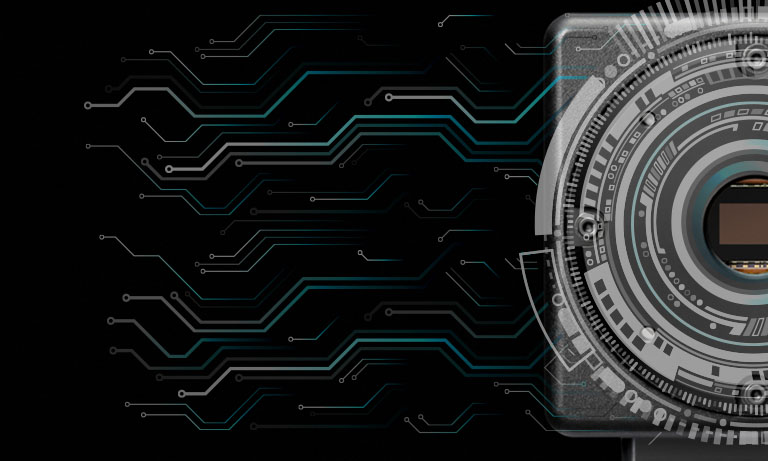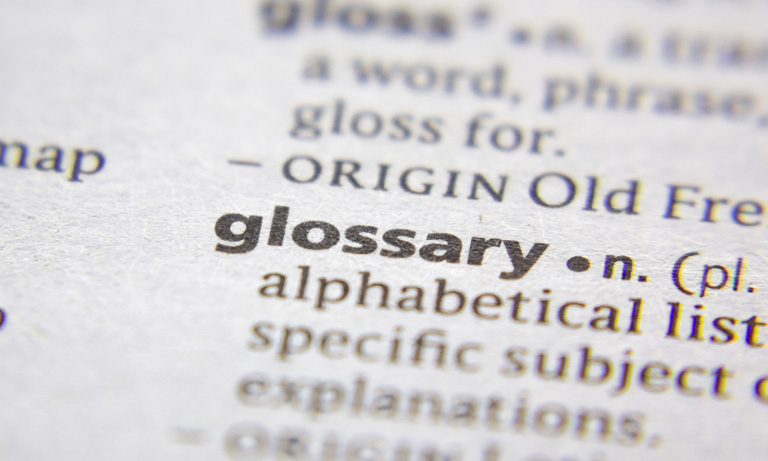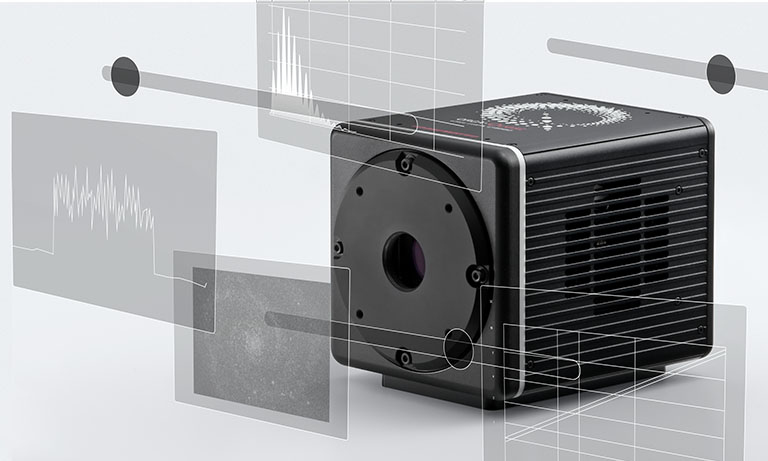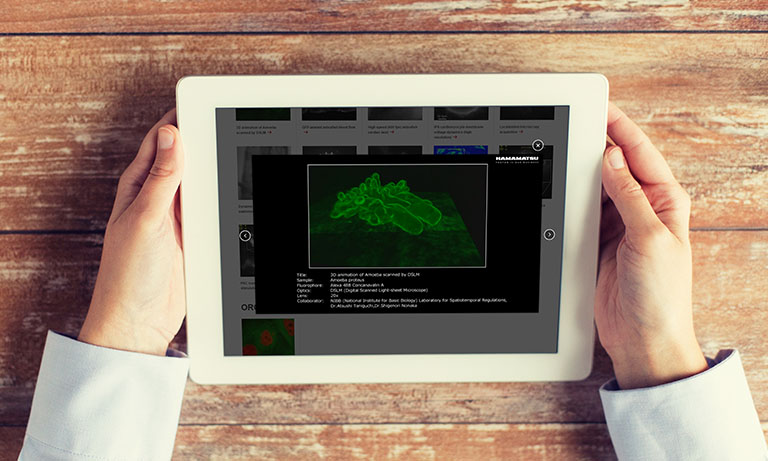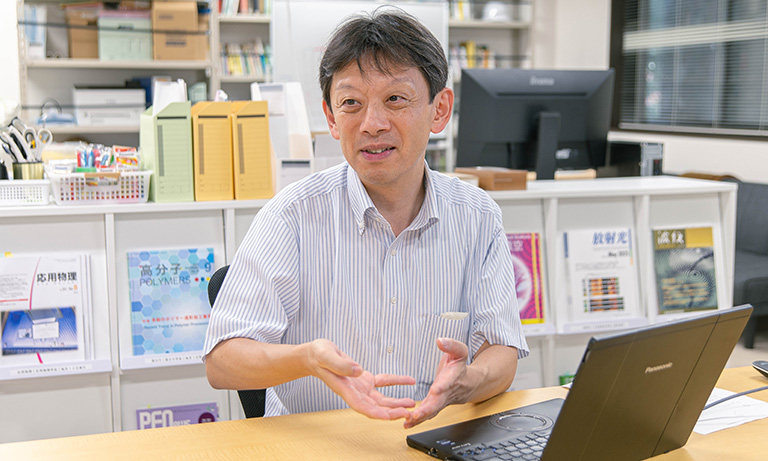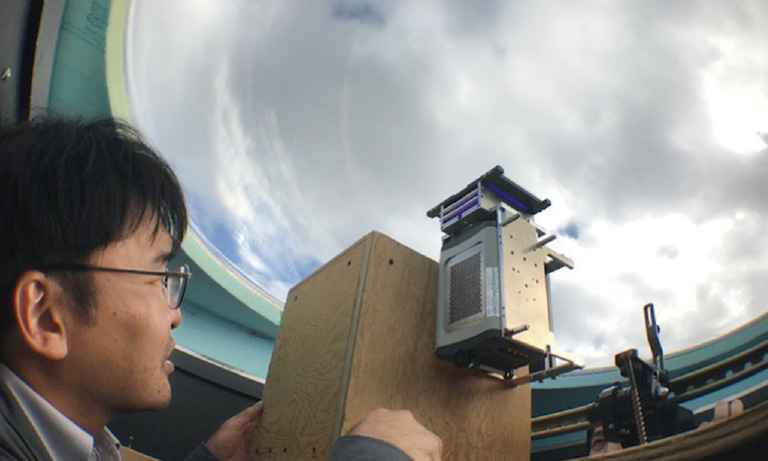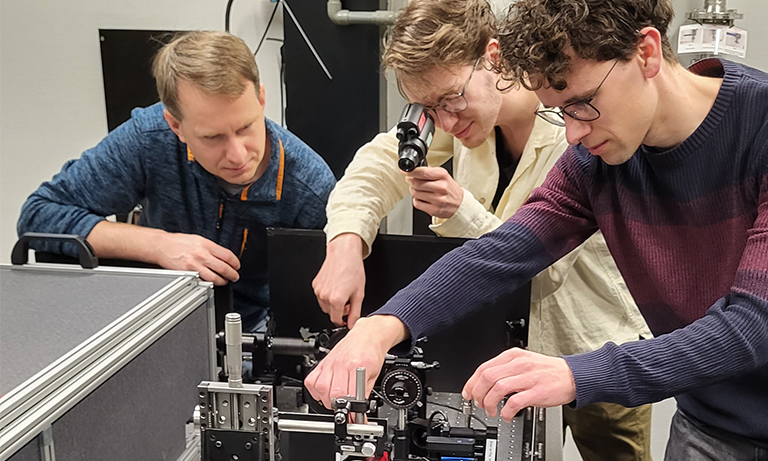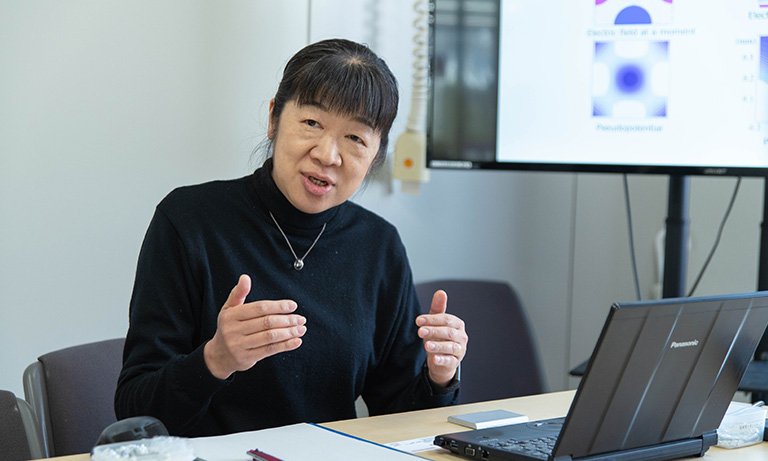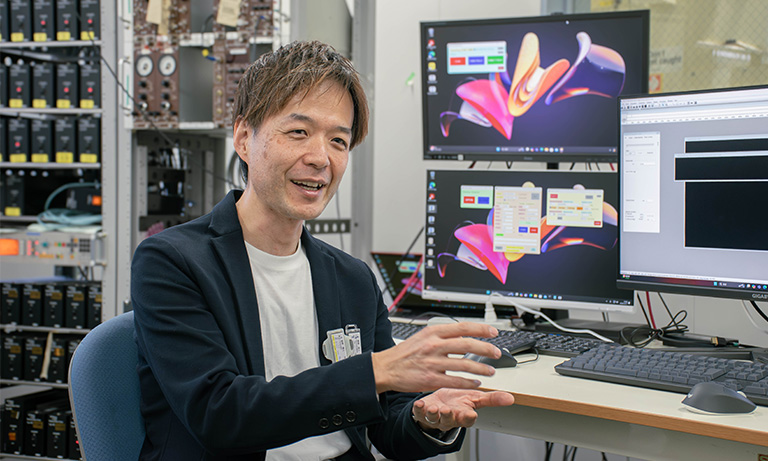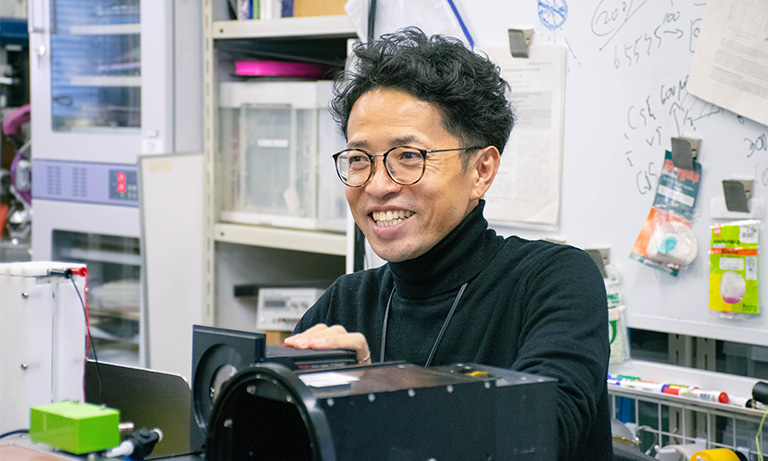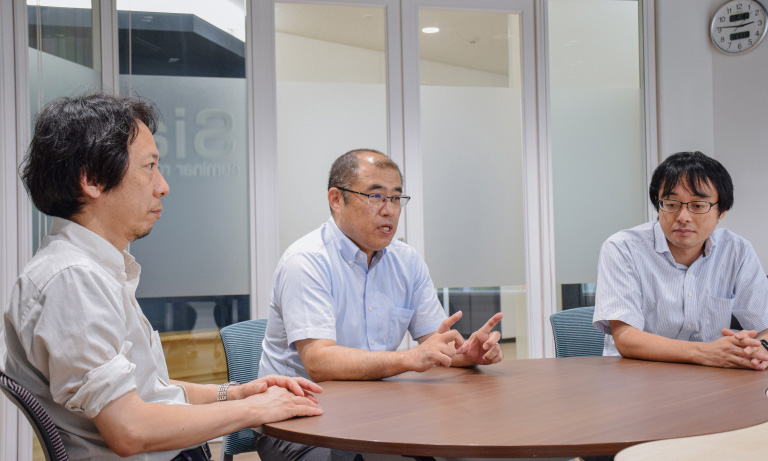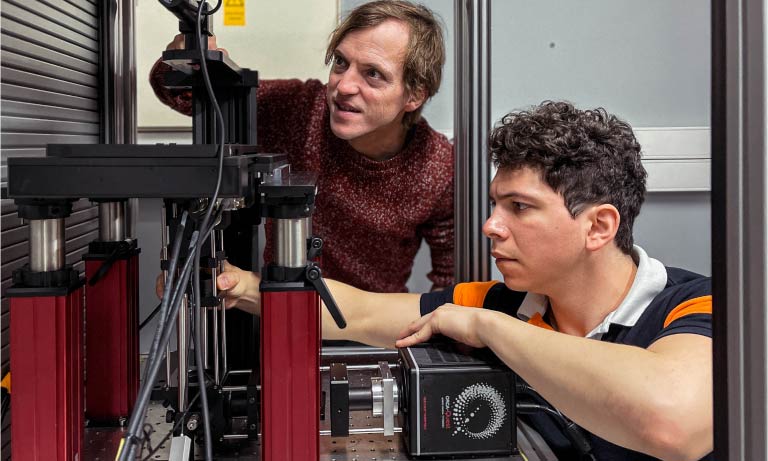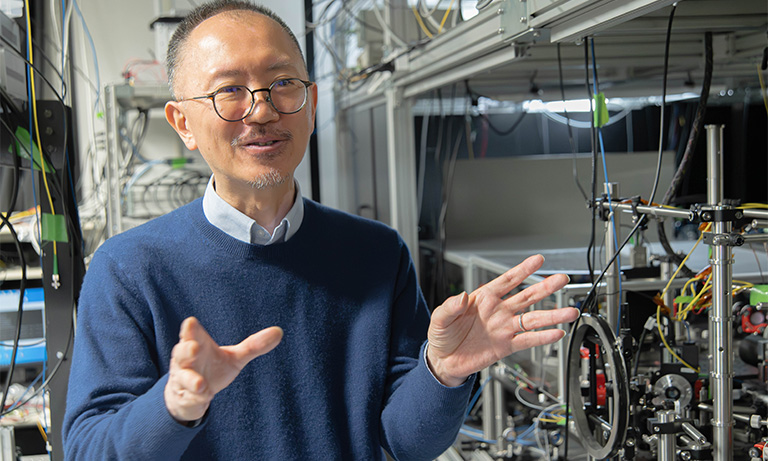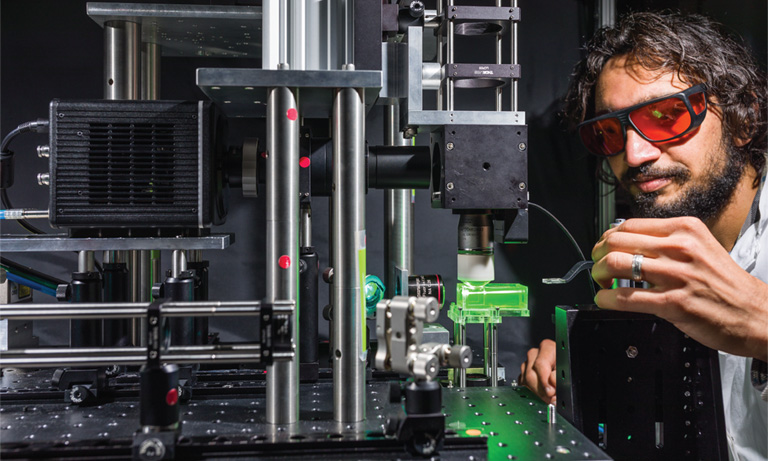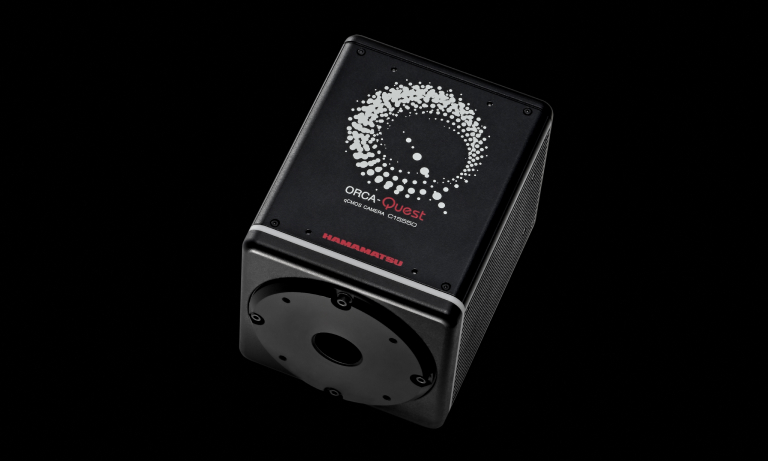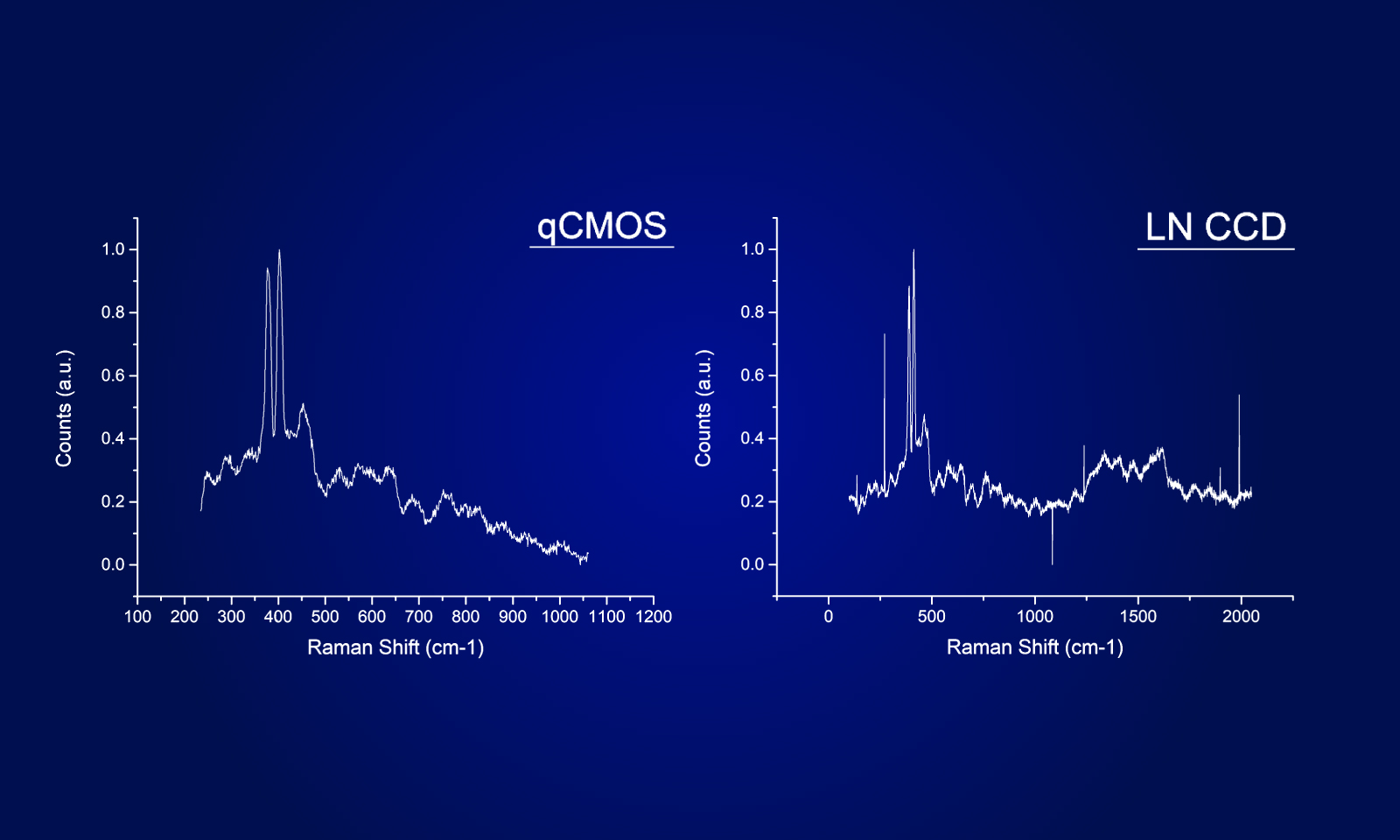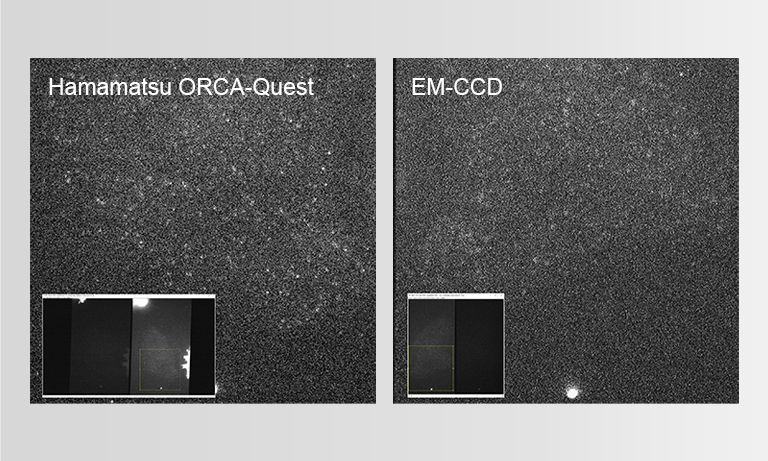Japan (JA)
国・地域を選択してください。
CNR (Contrast-to-Noise Ratio)
本ガイドの対象者 :
画像のコントラストに対して、人の目がどのようなときに誤った認識をしうるのかを理解したい方
本ガイドの内容 :
信号、コントラスト、ノイズの関係についてわかりやすく説明します。
Learn more...
ノイズとCMOS技術について詳しく知りたい方は、こちらをご覧ください。 Changing the Game.
カメラの信号検出能力を定量化したり (つまり「信号が見えるかどうか」)、検出器による測定の精度を定義するために、カメラの信号対雑音比(SNR)は非常に強力な手段です。しかし、SNRが常に最も意味のある値だとは限りません。
例えば、霧の日の街並みを撮影した写真を想像してみてください。画像は明るく、SNRも高いはずですが、コントラストが低いため、街並みを「見る」能力は損なわれています。コントラストとは、「視認性」(目的の信号と背景の信号を見分けることができるかどうか) の概念につながる一般的な用語です。光量が非常に大きい、つまりショットノイズが支配的になる領域では、感度は2つの異なるレベルの信号を識別する能力になり、多くの場合、最も重要な2つのレベルは信号とバックグラウンドです。
他のどのノイズ要因よりも、試料中のバックグラウンドは、感度を考慮する上では関連する用語として見過ごされてきました。バックグラウンドがSNRに影響することは分かっていますが、同じようにコントラストにも影響します。
基本的には、光ショットノイズが存在するため、バックグラウンド信号があるところには必ずバックグラウンドノイズも存在しますが、これにはカメラの要素もあります。SNRの式と同様に、コントラスト対ノイズ(CNR)も式で表すことが可能です
CNR = QE * S / [Nb + Ns] (ここで、Nbは背景のノイズ、Nsは信号のノイズです。)
バックグラウンドやバックグラウンドのノイズがイメージングにもたらす困難さを簡単に視覚化する方法が、図1に描かれています。この図から、EM-CCDとORCAⓇ-Flash4.0 (ORCA-Flash4.0 V3の旧モデル) のどちらかを選択するという文脈でバックグラウンドを考慮する場合、CNRが特に重要であることがわかります。光ショットノイズが支配的な領域へのクロスオーバー強度は、カメラの読み出しノイズ (Nr) の関数であることが分かっています。Gen II sCMOSカメラではNrが大幅に減少したため、ほとんどの蛍光顕微鏡では、信号とバックグラウンドの両方が光ショットノイズ (またはeQE) が支配的な 領域に存在するようになりました。この領域では、EM-CCDカメラにはエクセスノイズ (Fn) が発生するため、EM-CCDで検出した信号とバックグラウンドのノイズは、ORCA-Flash4.0より高くなり、CNRが低下します。
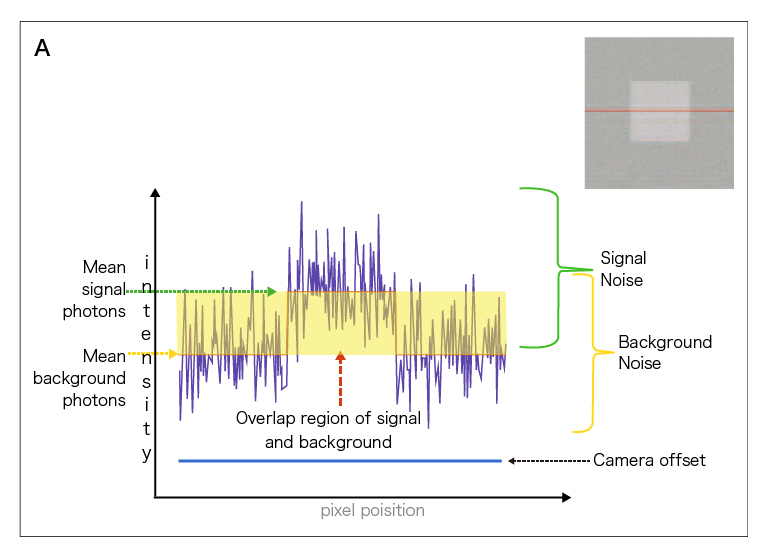
コントラストとノイズ
(A) このグラフは、右上の図のように、挿入された灰色の四角を通る線の信号強度とノイズを表しており、コントラストという観点において、バックグラウンドの問題を示している。画像のコントラストとは、バックグラウンドと目的の信号を区別する知覚能力のことである。ノイズがなければ、信号がバックグラウンドとほぼ同じであっても、識別はそれほど困難ではありません。しかし、カメラノイズや光ショットノイズによって、信号とバックグラウンドの領域が同じような強さで重なってしまい、信号とバックグラウの分離が難しくなります。
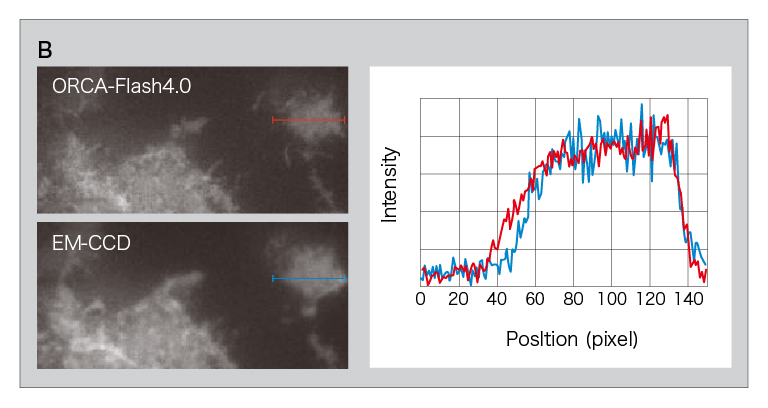
(B) エクセスノイズの影響により、EM-CCDカメラで撮影した画像のノイズはORCA-Flash4.0より大きくなる。このため、バックグラウンドが高い場合、EM-CCDの画像では信号とバックグラウンドの分離が難しくなる。
CNRは、私たちが画質をどのように認識するかについても表しています。目安としては、CNRが2の画素は目視で検出でき、より低い場合では、CNRが1の画素は、ギリギリ検出できる程度です。ただし、これはバックグラウンドに対する1ピクセルの信号のCNRのことです。CNRが1未満の画像では、空間的または時間的な解像度が低下するものの、構造を示すことがあります。CNRが非常に低い画素をまとめると、空間画素平均化と呼ばれる効果があります。
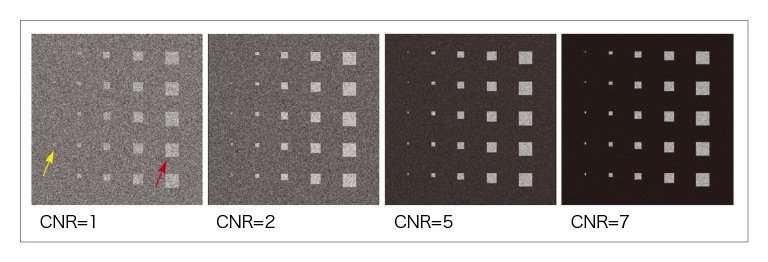
私たちが画像を見るとき、脳は似たような信号の広い領域を統合し、パターン、対称性、エッジを探すなど、複雑な機能を果たしています。このため、CNRが非常に悪い (1未満) 場合でも、隣接する画素の集まりがあれば、それらを視覚的に検出できる場合があります。
数学的には、平均化された画素数の平方根によって視認性が向上します2。定量的な画像実験では、目視ではなく、きちんと定義されたアルゴリズムによって測定が行われます。しかし、私たちはどんな出版物やプレゼンテーションの画像も目で見ることしかできないので、脳内で自動的に行われている空間平均化や統合を意識する必要があります。
この自動的な視覚処理とともに、表示される画像は表示形式に内在する多くの変数 (例えば、モニターの品質、画像データの強度スケーリング、印刷技術など) の影響を受け、知覚されるコントラストに影響を与えることがあります。このような理由から、あるカメラで撮影された画像の品質を、目視やjpegなどの非可逆圧縮された画像ファイルだけで評価することは避ける必要があります。
参考文献
- Murray, J. M., Appleton, P. L., Swedlow, J. R. & Waters, J. C. Evaluating performance in three-dimensional fluorescence microscopy. J. Microsc. 228, 390–405 (2007).
- Thompson,M. (2003).
- Confirmation
-
It looks like you're in the . If this is not your location, please select the correct region or country below.
You're headed to Hamamatsu Photonics website for JP (Japanese). If you want to view an other country's site, the optimized information will be provided by selecting options below.
In order to use this website comfortably, we use cookies. For cookie details please see our cookie policy.
- Cookie Policy
-
This website or its third-party tools use cookies, which are necessary to its functioning and required to achieve the purposes illustrated in this cookie policy. By closing the cookie warning banner, scrolling the page, clicking a link or continuing to browse otherwise, you agree to the use of cookies.
Hamamatsu uses cookies in order to enhance your experience on our website and ensure that our website functions.
You can visit this page at any time to learn more about cookies, get the most up to date information on how we use cookies and manage your cookie settings. We will not use cookies for any purpose other than the ones stated, but please note that we reserve the right to update our cookies.
1. What are cookies?
For modern websites to work according to visitor’s expectations, they need to collect certain basic information about visitors. To do this, a site will create small text files which are placed on visitor’s devices (computer or mobile) - these files are known as cookies when you access a website. Cookies are used in order to make websites function and work efficiently. Cookies are uniquely assigned to each visitor and can only be read by a web server in the domain that issued the cookie to the visitor. Cookies cannot be used to run programs or deliver viruses to a visitor’s device.
Cookies do various jobs which make the visitor’s experience of the internet much smoother and more interactive. For instance, cookies are used to remember the visitor’s preferences on sites they visit often, to remember language preference and to help navigate between pages more efficiently. Much, though not all, of the data collected is anonymous, though some of it is designed to detect browsing patterns and approximate geographical location to improve the visitor experience.
Certain type of cookies may require the data subject’s consent before storing them on the computer.
2. What are the different types of cookies?
This website uses two types of cookies:
- First party cookies. For our website, the first party cookies are controlled and maintained by Hamamatsu. No other parties have access to these cookies.
- Third party cookies. These cookies are implemented by organizations outside Hamamatsu. We do not have access to the data in these cookies, but we use these cookies to improve the overall website experience.
3. How do we use cookies?
This website uses cookies for following purposes:
- Certain cookies are necessary for our website to function. These are strictly necessary cookies and are required to enable website access, support navigation or provide relevant content. These cookies direct you to the correct region or country, and support security and ecommerce. Strictly necessary cookies also enforce your privacy preferences. Without these strictly necessary cookies, much of our website will not function.
- Analytics cookies are used to track website usage. This data enables us to improve our website usability, performance and website administration. In our analytics cookies, we do not store any personal identifying information.
- Functionality cookies. These are used to recognize you when you return to our website. This enables us to personalize our content for you, greet you by name and remember your preferences (for example, your choice of language or region).
- These cookies record your visit to our website, the pages you have visited and the links you have followed. We will use this information to make our website and the advertising displayed on it more relevant to your interests. We may also share this information with third parties for this purpose.
Cookies help us help you. Through the use of cookies, we learn what is important to our visitors and we develop and enhance website content and functionality to support your experience. Much of our website can be accessed if cookies are disabled, however certain website functions may not work. And, we believe your current and future visits will be enhanced if cookies are enabled.
4. Which cookies do we use?
There are two ways to manage cookie preferences.
- You can set your cookie preferences on your device or in your browser.
- You can set your cookie preferences at the website level.
If you don’t want to receive cookies, you can modify your browser so that it notifies you when cookies are sent to it or you can refuse cookies altogether. You can also delete cookies that have already been set.
If you wish to restrict or block web browser cookies which are set on your device then you can do this through your browser settings; the Help function within your browser should tell you how. Alternatively, you may wish to visit www.aboutcookies.org, which contains comprehensive information on how to do this on a wide variety of desktop browsers.
5. What are Internet tags and how do we use them with cookies?
Occasionally, we may use internet tags (also known as action tags, single-pixel GIFs, clear GIFs, invisible GIFs and 1-by-1 GIFs) at this site and may deploy these tags/cookies through a third-party advertising partner or a web analytical service partner which may be located and store the respective information (including your IP-address) in a foreign country. These tags/cookies are placed on both online advertisements that bring users to this site and on different pages of this site. We use this technology to measure the visitors' responses to our sites and the effectiveness of our advertising campaigns (including how many times a page is opened and which information is consulted) as well as to evaluate your use of this website. The third-party partner or the web analytical service partner may be able to collect data about visitors to our and other sites because of these internet tags/cookies, may compose reports regarding the website’s activity for us and may provide further services which are related to the use of the website and the internet. They may provide such information to other parties if there is a legal requirement that they do so, or if they hire the other parties to process information on their behalf.
If you would like more information about web tags and cookies associated with on-line advertising or to opt-out of third-party collection of this information, please visit the Network Advertising Initiative website http://www.networkadvertising.org.
6. Analytics and Advertisement Cookies
We use third-party cookies (such as Google Analytics) to track visitors on our website, to get reports about how visitors use the website and to inform, optimize and serve ads based on someone's past visits to our website.
You may opt-out of Google Analytics cookies by the websites provided by Google:
https://tools.google.com/dlpage/gaoptout?hl=en
As provided in this Privacy Policy (Article 5), you can learn more about opt-out cookies by the website provided by Network Advertising Initiative:
http://www.networkadvertising.org
We inform you that in such case you will not be able to wholly use all functions of our website.
Close
